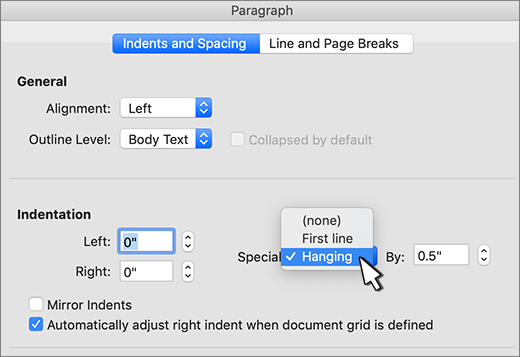
Running is similar - you can change your direction, but you'll still be running. There's no such thing as "an indent".Īnother way to explain the logic is that you cannot technically dent something "the other way" because a dent is still a dent, and it's either there or it's not. The correct noun of indent, in english, is indentation or indentment. In other words, indent isn't even a noun, but a verb that we sometimes use as a noun. Word will apply the default bullets and apply indents to the paragraphs. To apply default bullets using Word's built-in keyboard shortcut: Select the paragraphs to which you want to apply bullets. "To tooth" is a figurative way of saying to strike, blow, or sink into. Applying default bullets using Word's built-in keyboard shortcut. However, edent is not a valid english word because indent or dent is used instead. indent means "to have toothed into", whereas noun dent means "tooth" and verb edent means "to tooth into". Neither importation or importment are correct english words, afaik. I know you must be using MS Word with a combination of Keyboard and Mouse and novice usually does that. So while the noun for the verb import should, for instance, be importation or importment, we just say "an import" or "something imported" instead. MS Word is used for drafting a detailed document so that it looks attractive. Here it becomes even more confusing, because we often use latin verbs as nouns and adjectives (because the english syntax, and thus vocabulary, is different from the latin one). inactive/ inaction "not active/acting" or implosive/ imposing "negatively explosive/exposing", which showcases another reason why we mistake in for in-, because an implosion is effectively an "inwards explosion"). This is similar to how the - sign in math is used to describe a negative number (i.e.



When used with a noun or adjective, in- is typically a negator or declaration of absence (unless it's a verbal noun/adjective, in which case the verb dictates the meaning). the object's perspective, figuratively "from itself/within", which is probably why people confuse the two words). The prefix in-, when used with verbs, signifies "what is being done unto" rather than "what we do". But we do commonly confuse the two, which is why Outdent is a valid word. im-) is a prefix, not to be confused with the english word in (which is just shorthand for inside/inward/within). (Disclaimer: The following is "from what I know")


 0 kommentar(er)
0 kommentar(er)
